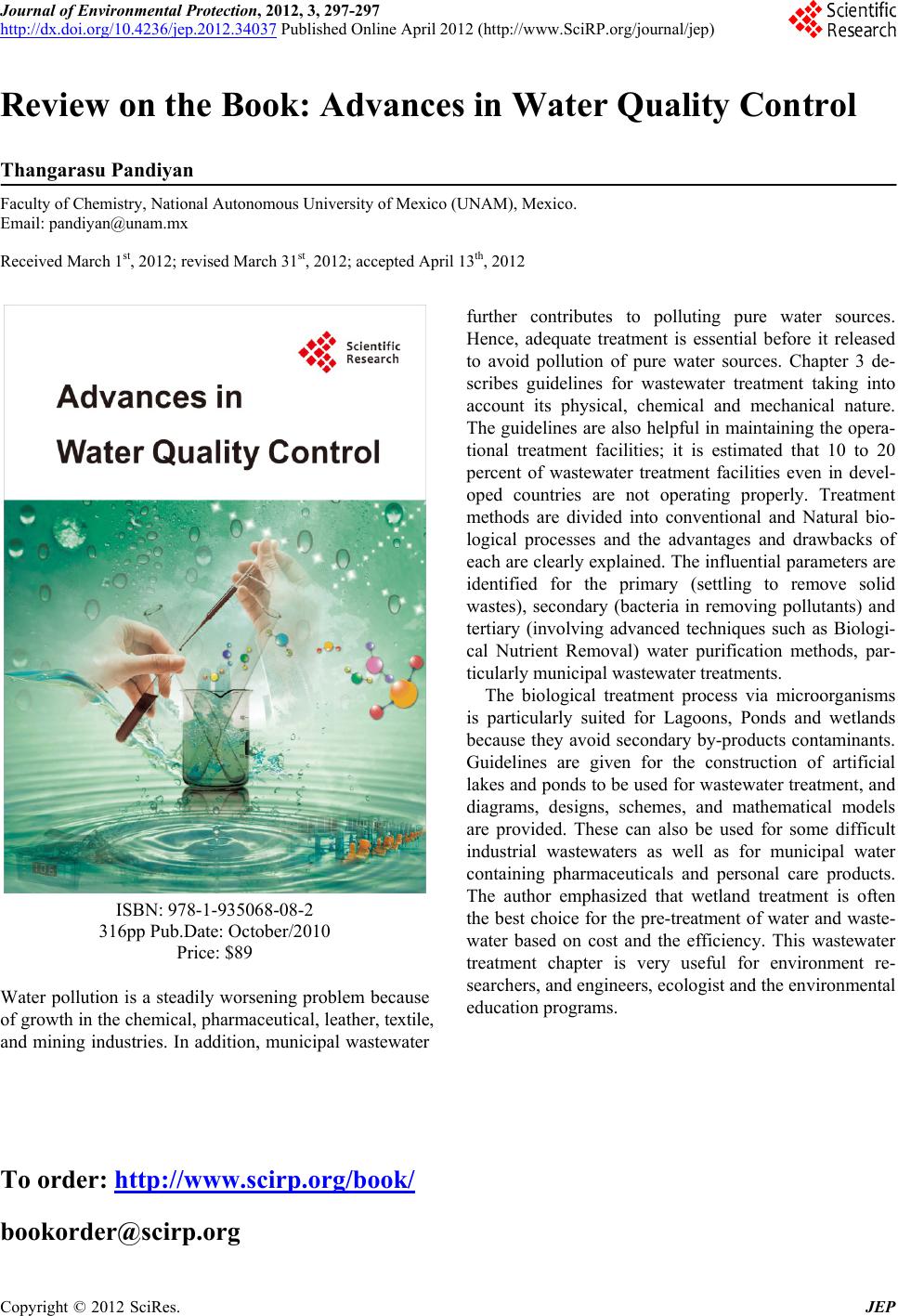
Journal of Environmental Protection, 2012, 3, 297-297
http://dx.doi.org/10.4236/jep.2012.34037 Published Online April 2012 (http://www.SciRP.org/journal/jep) 297
Review on the Book: Advances in Water Quality Control
Thangarasu Pandiyan
Faculty of Chemistry, National Autonomous University of Mexico (UNAM), Mexico.
Email: pandiyan@unam.mx
Received March 1st, 2012; revised March 31st, 2012; accepted April 13th, 2012
ISBN: 978-1-935068-08-2
316pp Pub.Da te: October/2010
Price: $89
Water pollution is a steadily worsening problem because
of growth in the chemical, pharmaceutical, leather, textile,
and mining industries. In addition, municipal wastewater
further contributes to polluting pure water sources.
Hence, adequate treatment is essential before it released
to avoid pollution of pure water sources. Chapter 3 de-
scribes guidelines for wastewater treatment taking into
account its physical, chemical and mechanical nature.
The guidelines are also helpful in maintaining the opera-
tional treatment facilities; it is estimated that 10 to 20
percent of wastewater treatment facilities even in devel-
oped countries are not operating properly. Treatment
methods are divided into conventional and Natural bio-
logical processes and the advantages and drawbacks of
each are clearly explained. The influential parameters are
identified for the primary (settling to remove solid
wastes), secondary (bacteria in removing pollutants) and
tertiary (involving advanced techniques such as Biologi-
cal Nutrient Removal) water purification methods, par-
ticularly municipal wastewater treatments.
The biological treatment process via microorganisms
is particularly suited for Lagoons, Ponds and wetlands
because they avoid secondary by-products contaminants.
Guidelines are given for the construction of artificial
lakes and ponds to be used for wastewater treatment, and
diagrams, designs, schemes, and mathematical models
are provided. These can also be used for some difficult
industrial wastewaters as well as for municipal water
containing pharmaceuticals and personal care products.
The author emphasized that wetland treatment is often
the best choice for the pre-treatment of water and waste-
water based on cost and the efficiency. This wastewater
treatment chapter is very useful for environment re-
searchers, and engineers, ecologist and the environmental
education programs.
To order: http://www.scirp.org/book/
bookorder@scirp.org
Copyright © 2012 SciRes. JEP